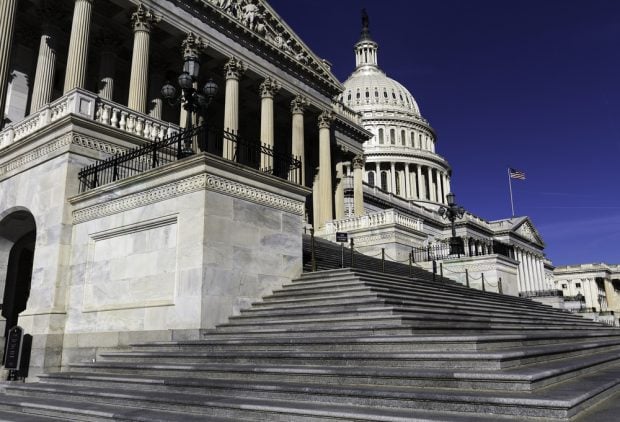The interchange cap, loan demand, compliance burdens andcorporate pricing are all figuring in the early discussion of thosenewly named Federal Reserve panels composed of bank and creditunion CEOs.
|Initial reviews of the first meetings held last week of theCommunity Depository Institutions Advisory Councils conducted bydistrict Fed banks showed the forums productive and helpful to CUleaders who took part, according to attendees.
|CU executives, who were definitely in the minority on the panelsdominated by community bank CEOs, said interchange concerns were akey topic, including expressions of alarm at the potential incomeloss and the financial impact on local communities.
|With an eye on one upcoming CDIAC session at the Federal ReserveBank of Kansas City, Charles Emmer, president/CEO of the $3 billionEnt FCU of Colorado Springs, said CUs may need to start thinkingdifferently about the Fed because of its new regulatory powersunder the Dodd-Frank Act.
|Indeed, rulemaking on interchange pricing appears “to put theFed in our future,” forecast Emmer, who is one of two CU executiveson the Kansas City Fed panel slated to meet March 24 and 25 withits Fed Bank President Thomas Hoenig. The other CU CEO is MichaelKloiber, president/CEO of Tinker FCU of Oklahoma City.
|Interchange, said Emmer, is bound to come up. “We've alreadyfigured the interchange loss will cost us about $10 million inrevenue, and that's not a small matter.”
|Though corporate status was not mentioned by CDIAC participantsat sessions of the Federal Reserve Banks of Boston and Richmond,Emmer said that apart from the ongoing fallout, the shock of thecorporate crisis, now nearly two years old, may at last be wearingoff and shedding a more positive light on some of the survivingcorporates.
|Emmer told Credit Union Times that he “never thought itpossible when the NCUA first acted that we would considerrecapitalizing our corporate, but now when you look at thealternatives and some of that pricing, they look pretty good.”Based on service and liquidity pricing of alternative providerslike the big money center banks, the pricing menu of theDenver-based SunCorp appears favorable, but Ent is still mullingprovider decisions, he added.
|Regarding the upcoming CDIAC meeting, Emmer said that advancematerials sent him by the Kansas City Fed staff show a lengthyagenda, emphasizing loan conditions and queries on “loan pricingand the balance sheet plus the effect of interchange and additionalrevenue sources.”
|Carl Ratcliff, president/CEO of the $350 million APNB FCU ofChesapeake, Va., and a member of the Richmond Fed's CDIAC, said aMarch 3 meeting, also dominated by a banker mix, was “very muchintroductory in nature with lots of explanations of businessmodels.”
|“There was lots of displeasure expressed at over-regulation,”noted Ratcliff, but he also found disparities with a number of bankCEOs who praised the increase to $250,000 in deposit insurance ashighly beneficial, “but I had to sit there and think about yes, butwhat about the cost?”
|Jan Roche, president/CEO of the $1.3 billion State DepartmentFCU of Alexandria and also a Richmond CDIAC member, echoed a viewheld by others and said she was gratified that CUs were at lastgetting recognized within the Fed structure and that the March 3session “did not turn into an ABA meeting.”
|She said the session was not exactly scripted, but there was anorderly format, as discussion on a variety of topics was followedby the 12 bank-CU participants.
|“I think there was just one minor shot at us by the president ofa small Maryland bank who brought up tax exemption and saidsomething about his bank could not price as easily as a creditunion because of the exemption,” said Roche. Other than that, thefour-hour session went smoothly.
|Roche said she found that get- together idea appealing and shesaid she also intends to contact other CU execs who are CDIACmembers at other regional Fed panels to share ideas.
|Gail Krall, president/CEO of the $80 million Minnesota PowerEmployees CU of Duluth and a member of the Minneapolis Fed CDIAC,said a March 8 meeting provided plenty of interchange discussion.She said her own CU stands to lose $175,000 to $200,000 in revenue,“and that's quite a hit for us.”
|William J. Rissel, president/CEO of Fort Knox FCU, Radcliff,Ky., and a member of the St. Louis Fed panel, maintained that hisexperience with the St. Louis Fed and with Fed Chairman BenBernanke's comments to Congress suggest “the Fed understands thatnetworks will not be willing to differentiate the interchange feefor smaller institutions and that smaller institutions willultimately be affected.”
|One other CDIAC panelist, Michael L'Ecuyer, president/CEO ofBellwether Community CU in Manchester, N.H., said it was hearteningto know “that regardless of charter, stock bank, mutual cooperativeor credit union, we all face the same negative implications fromthe Durbin amendment.”
|At the Boston Fed meeting, “We had discussion about memberbusiness lending and how we have money to lend, but there are lotsof companies out there whose financial condition may have worsenedmaking them less than creditworthy borrowers and that's tough.”
Complete your profile to continue reading and get FREE access to CUTimes.com, part of your ALM digital membership.
Your access to unlimited CUTimes.com content isn’t changing.
Once you are an ALM digital member, you’ll receive:
- Critical CUTimes.com information including comprehensive product and service provider listings via the Marketplace Directory, CU Careers, resources from industry leaders, webcasts, and breaking news, analysis and more with our informative Newsletters.
- Exclusive discounts on ALM and CU Times events.
- Access to other award-winning ALM websites including Law.com and GlobeSt.com.
Already have an account? Sign In
© 2024 ALM Global, LLC, All Rights Reserved. Request academic re-use from www.copyright.com. All other uses, submit a request to [email protected]. For more information visit Asset & Logo Licensing.









